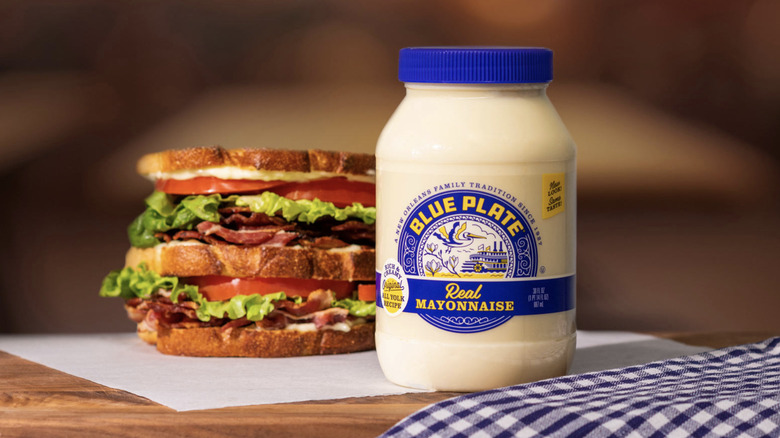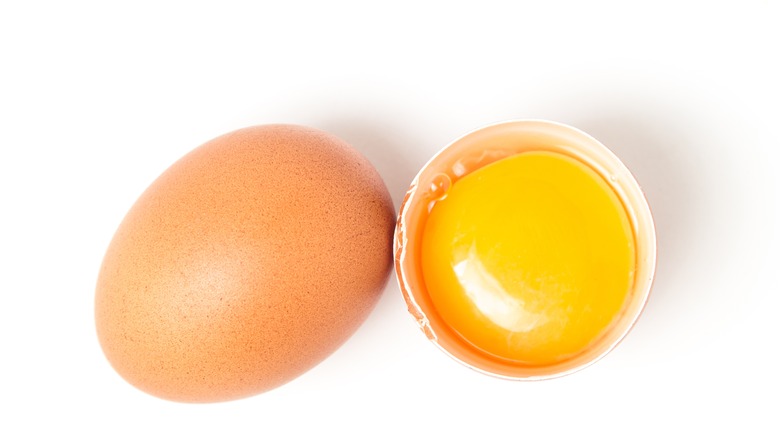The Eggy Reason Blue Plate Mayonnaise Tastes So Different
When it comes to mayonnaise, brand loyalties run deep. Many folks in the South prefer Duke's, especially in their mashed potatoes and pimento cheese. Kewpie mayo has also gained popularity in the United States, going from a classic Japanese product to a global sensation. And when Julia Child's mayo preference — Hellmann's — resurfaced a few years ago, the internet was divided.
One of the first commercial mayonnaise brands, Blue Plate still is widely regarded as one of the best popular mayos on the market. The brand started in 1929 in New Orleans and, over the past (almost) 100 years, has become a central part of the city's culinary identity. A good po' boy, for example, usually comes with a slather of mayo — and if it's traditional, it'll be Blue Plate.
Blue Plate Mayonnaise's distinctive flavor can be chalked up to the richness added by a key ingredient: eggs. Instead of whole eggs, the company uses only egg yolks in its three-ingredient recipe, but the egg yolks give this brand its characteristic silkiness and depth of flavor. Along with egg yolks, Blue Plate Mayonnaise includes oil and vinegar — and nothing else. This simplicity also makes it taste more like homemade mayo, which likely adds to the appeal for some consumers.
Why do eggs matter when making mayonnaise?
At its core, mayonnaise is made by blending fats and water — typically eggs and oil with acids like vinegar or lemon juice, along with mustard to help stabilize the sauce. Other mayo recipes call for extra ingredients. For example, the flavor of Kewpie comes from rice vinegar, which adds a slight hint of sweetness, as well as egg yolks and monosodium glutamate (MSG).
Egg yolks contain almost all the egg's fat content, plus lecithin, an emulsifier not present in the more watery and protein-rich egg whites. So, making mayo with only egg yolks, as Blue Plate does, amplifies the helpful qualities of the yolk while eliminating excess water from the whites that could interfere with the emulsion.
If you're making mayonnaise at home, your eggs matter more than you might think. One of the most important tips to remember when making mayonnaise is that eggs should be at room temperature. At that point, the saturated fats soften and liquefy, which makes the emulsion more successful — and your mayo silkier. If things start to go wrong with your mayo, eggs can also be what saves your project. Should the mayo starts to separate, you can fix your broken mayo by mixing an extra egg yolk with some lemon juice and reintroducing it into your mayo to jump-start the emulsion process again.

